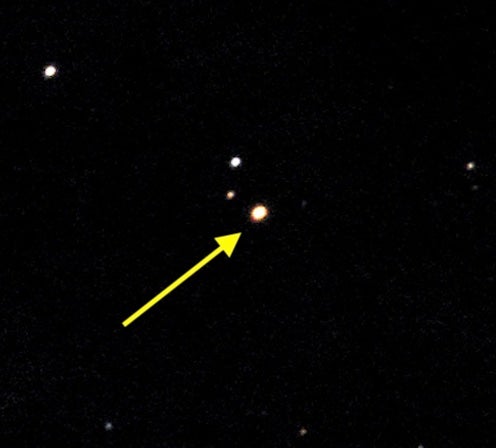
Lying at a distance of only 7.9 light-years, Wolf 359 is the fifth closest star to our Sun, moving 4.7″ per year against the background stars of Leo. Shining at magnitude 13.5, this red dwarf has a mass of 0.09 solar mass, making it one of the lowest-mass stars known.
Like many red dwarfs, Wolf 359 can undergo sudden increases in brightness before returning to normal within a few minutes. In 1950, German astronomer Hans-Ullrich Sandig became the first person to detect one such flare, noting “the star always 13.5 … was about 1 magnitude brighter than usual.” As this was the first evening he observed the star, he could not “say anything about the duration of the brightening.”
Since that initial event, astronomers have studied flare-rate activity across the star’s spectrum, finding that eruptions occur about once every two hours on average. While most of these are micro-events, only increasing by fractions of a magnitude, about 10 times a year Wolf 359 undergoes a superflare. This is when the star’s brightness soars one magnitude or more, as Sandig observed. More recently, on March 20, 2022, the star achieved visual magnitude 11.6.
While the cause of Wolf 359’s rapid flare production remains uncertain, astronomers think it could be enhanced magnetic activity linked to either the star’s rapid spin (once every 2.7 days) or interaction with possible exoplanets. However, no exoplanets have been confirmed around Wolf 359 as of yet; two candidates were reported in 2019, but one was found to be a false positive in 2021.









